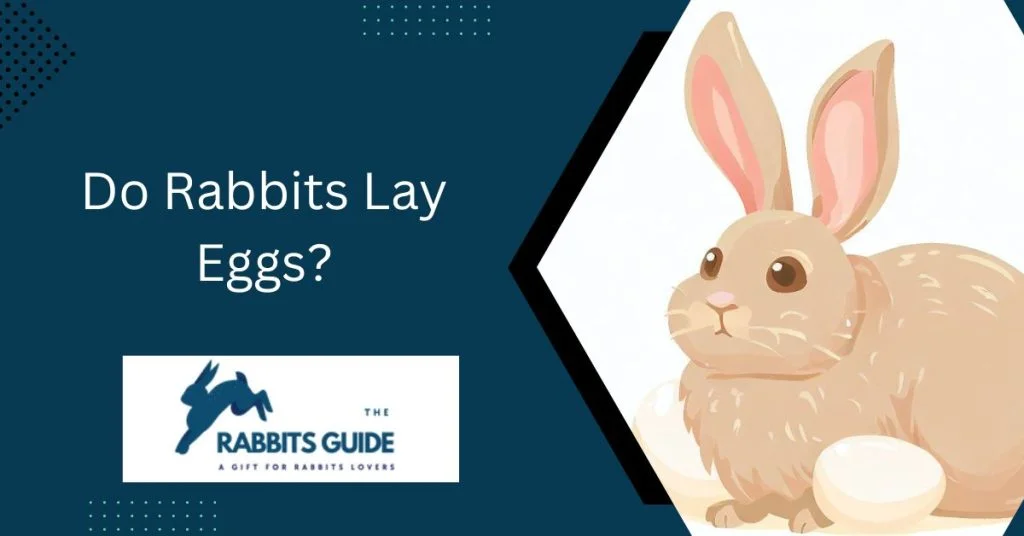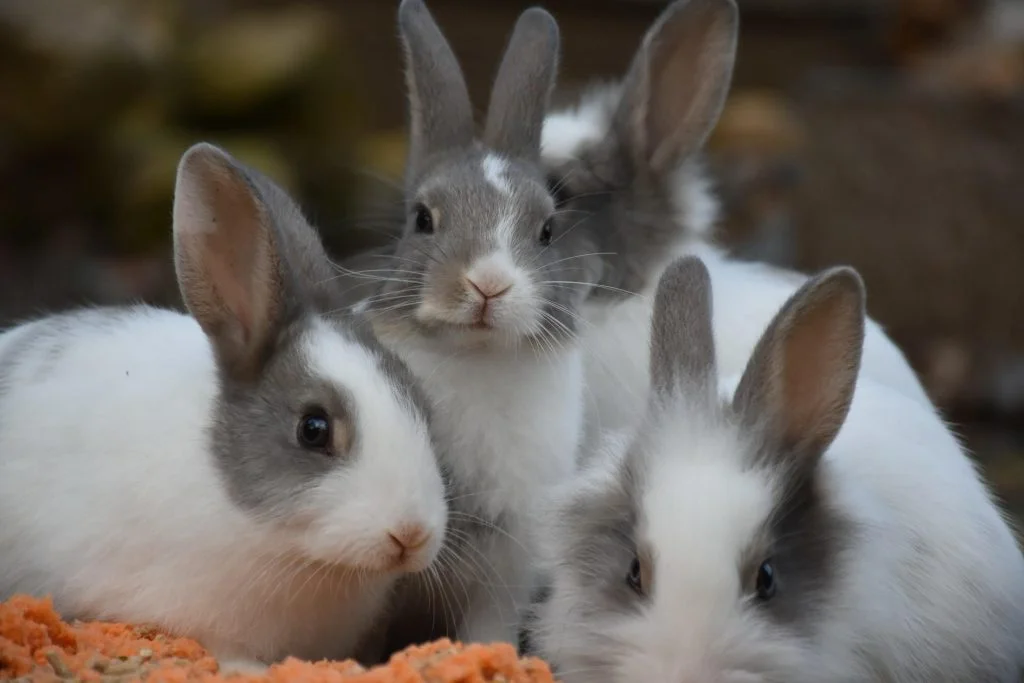Last updated on July 14th, 2023 at 05:19 pm
Do Rabbits Lay Eggs? Discover the truth behind the popular misconception with this informative exploration of whether rabbits lay eggs or not.
Introduction
There are many fascinating and sometimes perplexing questions in the world of animals. “Do rabbits lay eggs?” has puzzled many people. This article aims to shed light on this issue, dispelling any misconceptions regarding rabbit reproductive habits. Let’s get right to it!
Do Rabbits Lay Eggs?
In reality, rabbits do not lay eggs. This misconception is likely a result of the association between rabbits and the Easter Bunny, who is often depicted carrying an egg basket. It is true, however, that rabbits are mammals, and like all mammals, they birth live young. Female rabbits, known as does, give birth to young by mating with male bucks. The doe will give birth to babies called kits after a gestation period of 31 to 33 days. Though often associated with eggs during certain cultural celebrations, Rabbits do not lay eggs themselves. They are born hairless, blind, and helpless, relying solely on their mothers for nourishment and care.

The Reproductive Cycle of Rabbits
Understanding Rabbit Reproduction
Rabbits are undoubtedly known for their remarkable ability to reproduce rapidly, and their reproductive cycle is quite distinctive. Contrary to popular belief, bunnies are not egg layers but give birth to live young like mammals.

Mating and Gestation Period
Mating occurs when a male rabbit, also known as a buck, mounts a female rabbit, referred to as a doe. Rabbits are prolific breeders and can reach sexual maturity very early. Fertilization occurs internally after a successful mating, and the doe’s body undergoes various physiological changes to accommodate the growing offspring.
A rabbit usually has a gestation period of 28 to 32 days, which is relatively short compared to other mammals. In preparation for the impending arrival of her kits, the doe pulls hair from her body to prepare a nest that will provide warmth and comfort.

Birth and Maternal Care
Like many other animals, Rabbits do not build elaborate nests or dens but instead rely on hidden locations like burrows or dense vegetation when the gestation period is nearing its end.
The birthing process, also known as kindling, is usually quick, with the doe delivering multiple kits in one go. Despite being born hairless and blind, newborn rabbits rely entirely on their mother for survival.
The doe diligently nurses her offspring, giving them milk and warmth and keeping the nest clean by consuming the kits’ waste, ensuring a safe and hygienic environment for their development.

Common Misconceptions
The Easter Bunny Myth
The Easter Bunny is often associated with laying eggs, which is one of the most widespread misconceptions about rabbits. It is often depicted as a rabbit who delivers decorated eggs during Easter celebrations. However, this is purely a fictional representation since rabbits do not lay eggs.
The tradition of the Easter Bunny can be traced back to German folklore, where an egg-laying hare was said to bring gifts to children. As time progressed, the story evolved, and a rabbit eventually replaced the hare. As a result, rabbits laid eggs in popular culture, despite the biological inaccuracy.

Understanding the Reproduction of Rabbits: Egg-Laying or Not?
It is well known that rabbits breed prolifically, but did you ever wonder if they laid eggs like other animals? In contrast to popular belief, rabbits do not lay eggs. Like humans and many other animals, they give birth to live young.
A rabbit’s reproductive process involves a female, called a doe, and a male, called a buck. After reaching sexual maturity, usually around 4 to 6 months of age, a doe enters a reproductive cycle. This cycle is characterized by her ability to conceive and bear offspring.
A doe’s ovaries release eggs during her reproductive cycle due to hormonal changes. The buck’s sperm fertilize them during mating. Rabbits do not have a menstrual cycle; instead, they undergo induced ovulation, in which an egg is only released after mating with a buck.
In the rabbit’s reproductive system, fertilized eggs develop and grow after mating. Rabbits have a short gestation period, lasting approximately 31 to 33 days. Unlike many mammals, rabbits don’t build elaborate nests for their young. They give birth in simple burrows or existing shelters.
Kits are born when a doe reaches the right age. The new kits are blind and hairless at birth, relying on their mother’s care and milk for nourishment. A doe usually births four to twelve kits per litter, but larger litter is uncommon.

The Cultural Impact of the Rabbit-Egg Connection
As a cultural phenomenon, the Rabbit-Egg Connection has captured people’s imaginations across the globe. This unique connection refers to the fusion of two widely recognized symbols, the rabbit and the egg. Various cultures traditionally associate the rabbit with fertility, rebirth, and abundance, while the egg is associated with new beginnings, life, and renewal. Both symbols have had a profound cultural impact, transcending boundaries and resonating with people of all backgrounds.
A significant cultural impact of the Rabbit-Egg Connection is its connection to springtime and Easter celebrations. Eggs, which symbolize the tomb from which Christ emerged, have long symbolized Easter, a Christian holiday commemorating Jesus Christ’s resurrection. Incorporating the rabbit into this symbolism further emphasizes its new life and fertility theme. Children search for hidden eggs left by the Easter Bunny, a rabbit-like figure, during Easter egg hunts and celebrate the Rabbit-Egg Connection through decorations and Easter egg hunts.
As a result of the Rabbit-Egg Connection, rabbits have been depicted in literature and children’s stories as guardians of magical worlds or anthropomorphic creatures embarking on whimsical adventures beyond Easter. These narratives include eggs as an element of mystery and enchantment, suggesting that within an ordinary egg can be found extraordinary possibilities. Rabbits and eggs have become powerful symbols of imagination, wonder, and limitless possibilities.

Do rabbits lay eggs naturally?
No, rabbits do not lay eggs naturally. They are mammals, and like other mammals, they give birth to live young.
Can rabbits produce eggs under any circumstances?
No, rabbits cannot produce eggs under any circumstances. Only certain animals, such as birds, reptiles, and monotremes, like platypuses and echidnas, can lay eggs.
Is it possible for a rabbit to lay eggs due to genetic modification or scientific intervention?
No, a rabbit can’t lay eggs through genetic modification or scientific intervention. The ability to lay eggs is determined by an organism’s evolutionary heritage and biological characteristics, which rabbits do not possess.
Are there any known instances of rabbits laying eggs?
No, there are no known instances of rabbits laying eggs. This is not a natural behaviour for rabbits and has not been observed in any documented cases.
Why is the misconception about rabbits laying eggs common?
It may be due to cultural traditions and folklore that rabbits lay eggs, such as their association with Easter, when eggs are a common symbol. Disposing of such misconceptions based on scientific knowledge and facts is also important. Often, misunderstandings or exaggerations can lead to the spread of false information.
Conclusion
Like other mammals, rabbits do not lay eggs. They belong to the mammal family, and they give birth to live young ones. While some animals, such as birds and reptiles, lay eggs during their reproductive process, rabbits do not. Approximately 31 days after internal fertilization, rabbits give birth to fully-formed, undeveloped altricial (undeveloped) babies called kits after internal fertilization. While rabbits are fascinating creatures with unique characteristics, egg-laying is not one of them. They are born hairless, blind, and helpless and rely on their mothers for survival.
